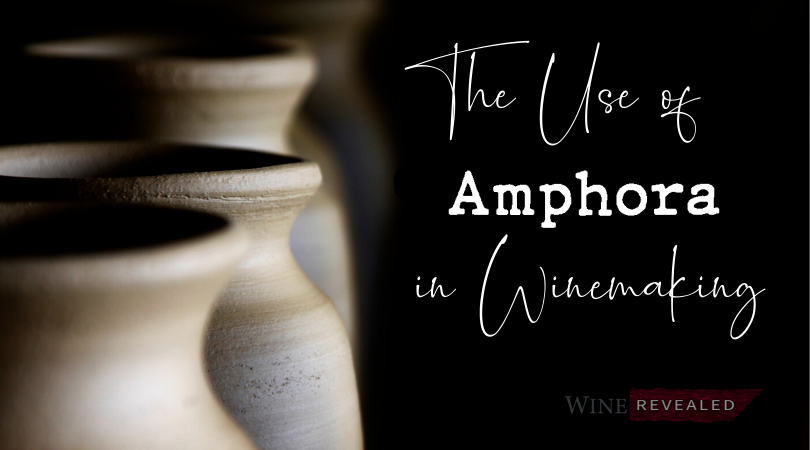Many images come to mind when thinking of winemaking: well-tended vines, oaken casks, and cellars full of reclining bottles are just a few of these. But the Wine Revealed crew got to bring a much different idea to the world when visiting Gravner Wines in northeastern Italy – amphora!
While the idea of making wine in amphora seems new to many, it was an original winemaking practice going back to ancient Greek, Egyptian, and Roman times. Amphora are clay vessels for storing and aging wine, and had many other practical uses in ancient times, such as storing water or olive oil. Anyone who has seen ancient pottery in a history museum has most assuredly seen amphora.
The practice of storing and aging wine in amphora has been traced to Georgia, “…the part of the Caucasus credited as the birthplace of wine some 6,000 years ago…” To this day, amphora are still the preferred vessels for wine in that part of the world, where they are known as qvevri.
Josko Gravner visited winemakers in Georgia to learn about the process of making wine in amphora, and he was hooked. He purchased some amphora and brought them home to Italy to use in his own wine production.

Soon, other winemakers follow suit. Of this, Kerin O’Keefe of Wine Enthusiast writes, “For most converts, amphorae are the natural progression of a holistic approach to winemaking that includes avoiding harsh chemicals in the vineyards and a hands-off approach in the cellars. Winemakers who have switched to amphorae say the vessels produce the purest expression of their grapes and vineyard areas.”
Mateja Gravner says of amphora, “The first year wines are preserved in amphora, or qvevri is the correct name…. Until the middle ages amphora was the only word used for winemaking. Then during the middle age people became more and more confident in making bottles. And the big plus of bottles is that it’s much easier to transport them and they don’t break so easily.”
At Gravner winery, perfect grapes are selected, crushed, and then go right into the amphoras. The amphoras are mostly buried underground, with only a few of the top inches visible. The grapes and skins are kept together for five to six months, which is very unusual for white grapes, but it is believed that the fermenting wine gains a lot of flavor from the skins.

This practice is associated with many amphora-fermented wines, dubbed “orange wines” by wine critics, in which white grapes are treated in the customary manner of reds.
Mark Stock of TheManual.com explains, “These skin-fermented white wines benefit from extended skin contact, affording added color, texture and red wine-like qualities like tannin. More time on the skins plus a style that tends to invite a little oxidation yields the signature orange or amber shade.”
While the practice may seem quaint and historically appealing, and possibly even a bonus feature to impress wine tourists, there are tangible results in the wine produced.
First, amphora allow for more oxygen exchange than wood – an average of twice the amount. Nick Borland of the Grapes & Corks blog explains further, “…they pull out acidity as the clay reacts enzymatically with wine and raises its pH, allow oxygen exchange, and provide superior insulation, among other benefits.”
Further, the temperature-regulating properties of amphora are considered a major benefit. The lower temperatures naturally occurring in amphora allow wines to ferment longer than wines in steel or wood. “The lower temperatures for clay-fermented wines create brighter and fresher wines,” adds Borland.
Josko Gravner prefers to slow down the oxygen exchange in his amphora by sealing them with beeswax, a practice that prevents the wines from becoming oxidized.
During the Wine Revealed walkthrough of the Gravner winery, the crew was impressed with the beauty, simplicity, and respect for nature’s role in winemaking that was evident throughout. But most impressive perhaps was the stark beauty of the amphora.

They are buried up to the rims in neat rows so that winemakers can easily access them. The room is a simple and elegant nod to nature from a winemaker who believes that simple and natural is the only way to go for things that end up in the stomach.
The wines spend 5-6 months in these amphora. “In order to make wine this way, even the cellar has to be very simple,” Josko asserts. The cellar uses very little power to work because there is no large machinery, and it brings him joy that he can make wine this way.
There is no temperature control, no technology employed, no commercial yeasts added. Instead, nature is trusted to do what it does best… in this case, what it has done faithfully in amphora for thousands of years.
In Josko’s opinion, there are two ways to make wine. One is to follow the market, which means recognizing what the market is asking for, and producing for it. The other way is not to follow the market, but to try to do your best every day. Sometimes the market recognizes this quality, sometimes it doesn’t – but being widely liked is not his highest priority.
Amphora are the simplest way to produce wine, and this simplicity leads to perfection in Josko’s book. He believes that earth, grapes, and wine are all connected, “Simplicity… means that you take away everything that is not necessary.”
Simplicity means “not having all the things that are not strictly necessary in order to have only what is exactly necessary.” One only need to drink Gravner’s acclaimed Amarone wine to know that this is true.

